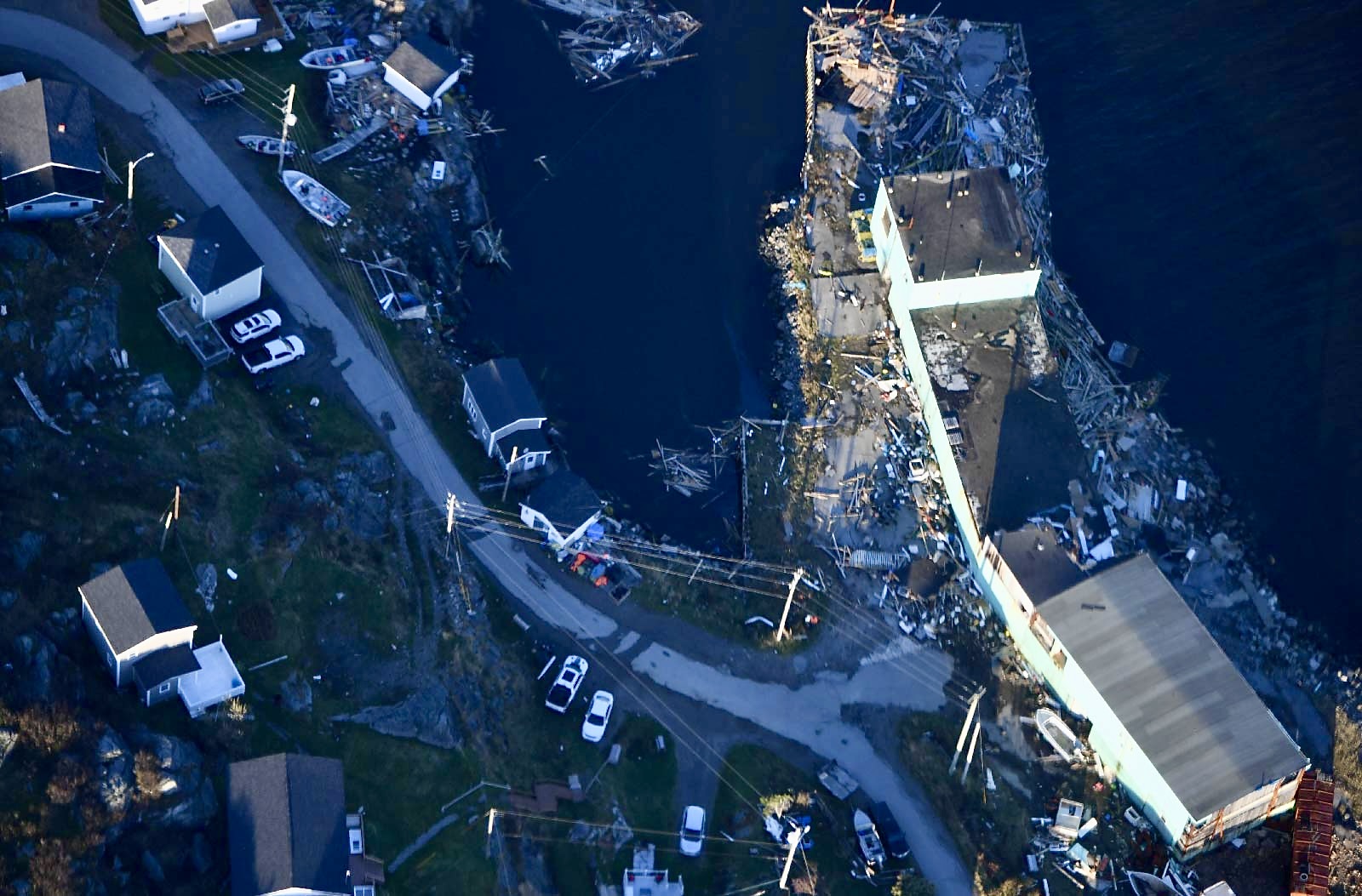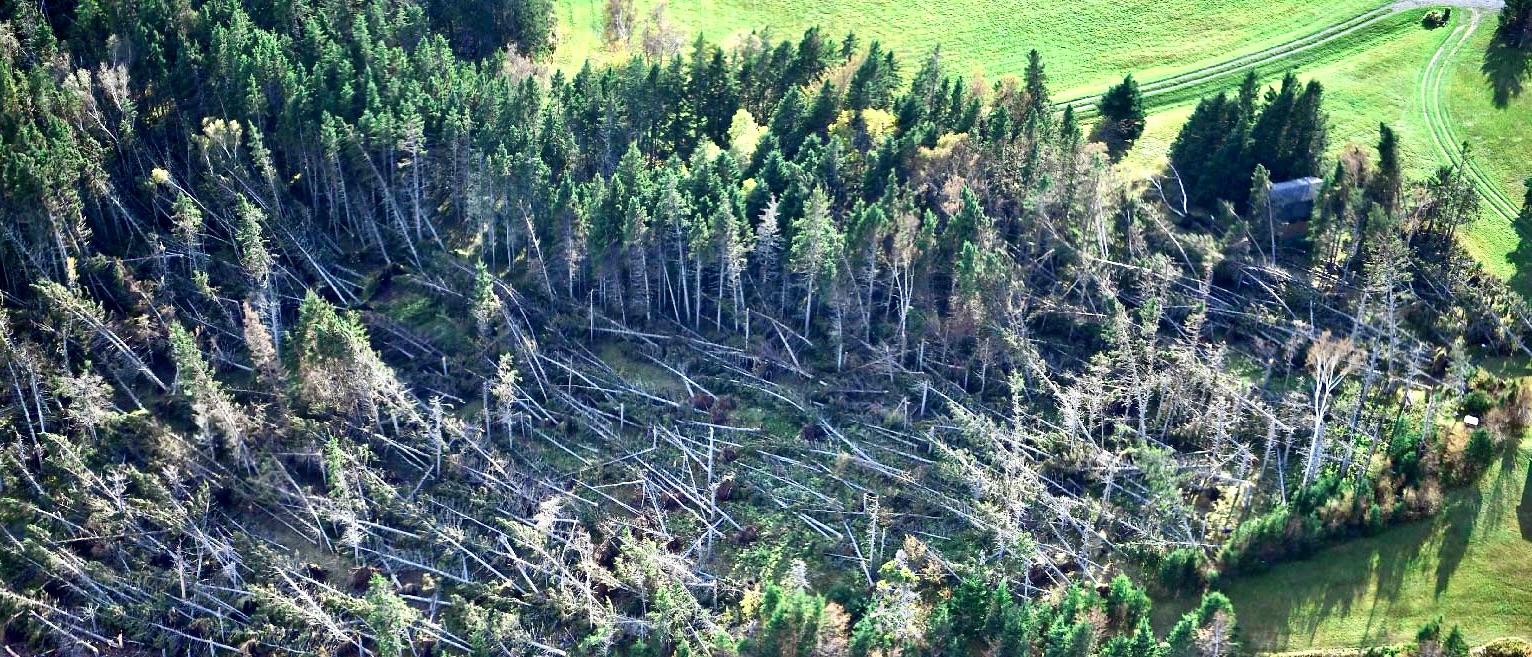Since 1991, the iconic red planes of Canada’s National Aerial Surveillance Program (NASP) have played a critical role in protecting Canada’s coasts and waterways—from flyovers, to monitoring our oceans and watching for pollution, to watching for endangered whales in the waters—the NASP crew is always ready to get the job done.
Monitoring more than pollution
Beyond pollution monitoring, the NASP also serves Canadians by supporting response efforts to natural disasters like Hurricane Fiona. For NASP crew member Benjamin Fortier, who is a Surveillance Officer based in Moncton, those kinds of missions only happen once or twice a year.
On an average day, Ben’s daily routine involves working alongside a small team of four to five crew members to navigate the NASP Dash-8 aircraft through its many surveillance missions. Some of his tasks involve assessing weather conditions, planning, and executing flight plans, and communicating with those on the ground.
A call like no other
On September 24 and 25, 2022, Hurricane Fiona swept through Atlantic Canada and had devastating impacts on thousands of residents and businesses. The result was unprecedented levels of flooding, power outages, and damage to coastal infrastructure and communities.
Aerial surveillance photo taken by the National Aerial Surveillance Program crew shows the damage of Hurricane Fiona on a coastal community in Atlantic Canada.
When Ben and the NASP crew received the call to assess the damage caused by the storm, they knew it wouldn’t be an average day on the job.
The crew was tasked to conduct damage assessment over impacted areas, like Cape Breton, Nova Scotia, and the Northumberland Strait. Ben and his team quickly organized a flight plan to cover those targeted areas of interest and captured high-quality images and videos of the damage.
For Ben, some of the damage he witnessed included “huge sections of the coastlines being washed out, […] lots of downed trees, you could see some forest areas where all the trees fell in one direction like a card castle […] and a lot of grain silos that were knocked down.”
Aerial surveillance photo taken by the National Aerial Surveillance Program after Hurricane Fiona shows a section of severely damaged forest in Atlantic Canada.
Though strong and mighty, during incidents like Hurricane Fiona, the Dash 8 aircraft can still be challenged by adverse weather conditions. When planning the flight route, the NASP crew had to ensure that challenges like strong turbulence, lack of visibility, and low ceilings were accounted for and didn’t limit the team’s surveillance efforts.
An important job today, with an impact for tomorrow
In total, Ben, and other members of the NASP crew conducted five flights over three days on the Moncton-based Dash-8 aircraft, surveying the aftermath of Hurricane Fiona to provide situational awareness to the Government of Canada and provincial governments. They conducted a combined total of 23 hours of emergency surveillance in support of the incident.
When asked how the NASP contributed to the response efforts following the storm, Ben says, “The data that the NASP provided to response agencies was useful to assess damage rapidly and tailor response quicker and more efficiently.”
That includes federal departments like Public Safety and Infrastructure Canada, who reached out to Ben in the aftermath of the storm asking him to share the data, including images of the damage assessed during the flights. That data, he says, would help the department assess and demonstrate to what extent the existing infrastructure withstood the impacts of the hurricane, or whether it can be improved going forward.
That data will also “permit departments to justify the improvement of existing weak structures or show the resilience of other installations.”
The NASP crew consists of Pilots from the Flight Operations Branch, Aircraft Maintenance Engineers from the Technical Services Branch and Surveillance Officers from the Intelligence, Surveillance and Reconnaissance Division.


